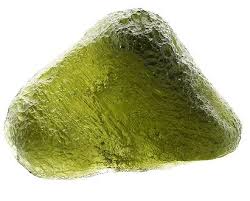The Enigmatic World of Tektites
Have you ever heard of tektites? These mysterious glassy objects have fascinated scientists and collectors for centuries. Tektites are natural glass rocks formed from terrestrial debris ejected during meteorite impacts. They are often mistaken for meteorites, but their origin is quite different.
Tektites come in various shapes and sizes, ranging from small beads to large irregular masses. They are found in different parts of the world, with major strewn fields located in Southeast Asia, Australia, Central Europe, and North America. The exact process of tektite formation is still a subject of debate among scientists.
One popular theory suggests that tektites are created when a meteorite strikes the Earth’s surface at high velocity, causing the target material to melt and be ejected into the atmosphere. As this molten material cools and solidifies during re-entry, it forms tektites with unique features such as aerodynamic shapes and surface textures.
Studying tektites can provide valuable insights into impact events and planetary geology. By analysing their chemical composition and isotopic signatures, researchers can learn more about the origins of these enigmatic objects and their connection to extraterrestrial bodies.
Collectors are drawn to tektites not only for their scientific significance but also for their aesthetic appeal. These glassy gems come in a range of colours, including black, green, brown, and even translucent varieties. Some enthusiasts believe that tektites possess metaphysical properties and consider them as powerful talismans.
Whether you’re a scientist intrigued by the mysteries of space or a collector captivated by the beauty of natural glass formations, tektites offer a fascinating glimpse into the dynamic interactions between celestial bodies and our planet. Exploring the world of tektites is like embarking on a cosmic journey through time and space.
Exploring Tektites: Six Insights into Earth’s Meteorite Impact Treasures
- Tektites are natural glass objects formed from terrestrial debris ejected during meteorite impacts.
- They are usually black, green, or brown in colour and have a smooth surface texture.
- Tektites are found in various parts of the world, including Southeast Asia, Australia, and Central Europe.
- Some tektites exhibit unique shapes like spheres, discs, or dumbbells due to their aerodynamic flight through the atmosphere.
- Scientists study tektites to learn more about impact events and the geological history of our planet.
- Collecting tektites can be a fascinating hobby for enthusiasts interested in meteorites and space-related phenomena.
Tektites are natural glass objects formed from terrestrial debris ejected during meteorite impacts.
Tektites are captivating natural glass objects that originate from terrestrial debris expelled during meteorite impacts. These enigmatic formations hold a unique allure due to their mysterious origins, believed to be intricately linked to the intense forces unleashed by cosmic collisions. The process of tektite formation remains a subject of scientific intrigue, offering a window into the dynamic interplay between celestial events and Earth’s geological history.
They are usually black, green, or brown in colour and have a smooth surface texture.
Tektites, intriguing glassy objects formed from terrestrial debris during meteorite impacts, typically exhibit striking colours such as black, green, or brown. Their smooth surface texture adds to their enigmatic allure, making them visually captivating for both scientists and collectors. The distinct hues and textures of tektites contribute to their unique charm and make them stand out as fascinating specimens in the world of meteoritic studies.
Tektites are found in various parts of the world, including Southeast Asia, Australia, and Central Europe.
Tektites, intriguing glassy objects of natural origin, can be discovered in diverse regions across the globe, such as Southeast Asia, Australia, and Central Europe. These enigmatic rocks, formed from terrestrial material ejected during meteorite impacts, offer a unique window into the geological and astronomical events that have shaped our planet’s history. The presence of tektites in different continents underscores the widespread impact of cosmic collisions and highlights the interconnectedness of Earth with the broader universe.
Some tektites exhibit unique shapes like spheres, discs, or dumbbells due to their aerodynamic flight through the atmosphere.
Some tektites showcase distinctive shapes such as spheres, discs, or dumbbells, which are a result of their aerodynamic journey through the Earth’s atmosphere. As these glassy objects are ejected from impact sites and travel at high speeds, they undergo unique transformations that give them their characteristic forms. The study of these aerodynamic features provides valuable insights into the processes involved in tektite formation and their fascinating journey from impact to landing on our planet’s surface.
Scientists study tektites to learn more about impact events and the geological history of our planet.
Scientists study tektites as valuable tools to deepen their understanding of impact events and unravel the intricate geological history of our planet. By analysing the chemical composition and isotopic signatures of tektites, researchers can glean crucial insights into the dynamics of meteorite impacts and their lasting effects on Earth’s surface. Tektites serve as tangible remnants of ancient cosmic collisions, offering a unique perspective on the processes that have shaped our planet over millions of years.
Collecting tektites can be a fascinating hobby for enthusiasts interested in meteorites and space-related phenomena.
Collecting tektites can be a captivating hobby for enthusiasts intrigued by meteorites and space-related phenomena. These unique glassy objects, formed from terrestrial debris ejected during meteorite impacts, offer collectors a tangible connection to extraterrestrial events. Tektites come in various shapes and colours, each with its own story to tell about the dynamic interactions between celestial bodies and our planet. Engaging in the hobby of collecting tektites not only allows enthusiasts to build a diverse and intriguing collection but also provides an opportunity to delve into the mysteries of the universe through these fascinating specimens.

